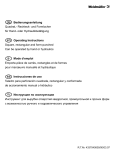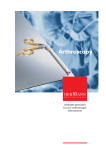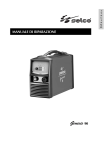Download Manual de uso y mantenimiento
Transcript
15 M 111 ENGLISH FRANÇAIS DEUTSCH ESPAÑOL ĞƌƟĮĞĚYƵĂůŝƚLJ DĂŶĂŐĞŵĞŶƚ^LJƐƚĞŵ ĞƌƟĮĞĚŶǀŝƌŽŶŵĞŶƚĂů DĂŶĂŐĞŵĞŶƚ^LJƐƚĞŵ ĞƌƟĮĞĚKĐĐƵƉĂƟŽŶĂů ,ĞĂůƚŚΘ^ĂĨĞƚLJ DĂŶĂŐĞŵĞŶƚ^LJƐƚĞŵ HYDRAULIC PULLER TYPE PUNCHING TOOL OUTIL HYDRAULIQUE EMPORTE PIECE HYDRAULISCHES LOCHSTANZWERKZEUG HERRAMIENTA HIDRAULICA PERFORADORA UTENSILE OLEODINAMICO FORALAMIERE HT-FL75 OPERATION AND MAINTENANCE MANUAL NOTICE D'UTILISATION ET ENTRETIEN BEDIENUNGSANLEITUNG MANUAL DE USO Y MANTENIMIENTO MANUALE D'USO E MANUTENZIONE 1 ITALIANO TG 0350 WARNING LABELS - ETIQUETTES SIGNALETIQUES - WARNSCHILDER ETIQUETAS DE ATENCIÒN - ETICHETTE D'AVVERTENZA – Before using the tool, carefully read the instructions in this manual. – Avant d'utiliser cet outil, lire attentivement les instructions de cette notice. – Vor Inbetriebnahme unbedingt die Bedienungsanleitung durchlesen. – Antes de utilizar la herramienta, leer atentamente las instrucciones contenidas en este manual. – Prima di utilizzare l'utensile, leggere attentamente le istruzioni contenute in questo manuale. – When operating the tool, keep hands away from the danger zone. – Au cours de l'utilisation, tenir les mains éloignées de la zone de danger. – Während der Arbeit nicht mit den Händen in den Gefahrenbereich fassen. – Durante su utilización, mantenga las manos fuera de la zona de peligro. – Durante l'utilizzo, mantenere le mani fuori dalla zona di pericolo. – Always wear safety glasses and gloves when operating this tool. – Porter toujours les lunettes de protection et les gants de travail. – Immer mit Schutzbrille und Handschuhen bedienen. – Trabajar siempre con las gafas y guantes de seguridad. – Operare sempre con visiera protettiva e guanti da lavoro. 2 ENGLISH HYDRAULIC PULLER TYPE PUNCHING TOOL TYPE HT-FL75 CAUTION • Before each use, check the punches, dies and draw studs, and replace any that are worn or damaged, particulary any punches that have damaged cutting surfaces. • Damaged or improperly assembled accessories can break and hit the operator with sufficient force to cause serious injuries. • Before each use, verify the integrity of the head; replace any worn, possibly damaged or missing parts with original Cembre spares. • Only for use in punching holes in single layers of material and thicknesses as shown in TABLES 1 and 2. Any other use may cause components to break with potential risk of serious injury. • During operation do not allow anyone to pause in the work area, especially in front of the punch. • The use of Cembre punching accessories is recommended. Accessories from other suppliers may not be designed to withstand the force generated by this tool and may be damaged or break with potential risk of serious injury. 1. GENERAL CHARACTERISTICS – Application range: suitable for punching single layers of stainless steel, mild steel, fibreglass and plastic material. – Max. puncing capacity: ........................................................................................... ø 140 mm (5.5 in.) – Developed force: ....................................................................................................... 75 kN (8.4 sh.ton.) – Max. operating pressure ........................................................................................ 700 bar (10,000 psi) – Dimensions: length................................................................................................. 452 mm width .................................................................................................. 129 mm (17.8 in.) (5.1 in.) – Weight:........................................................................................................................... 3,67 kg (8.1 lbs) – Oil:........................................................................................... AGIP ARNICA 32 SHELL TELLUS OIL TX 32 or or equivalent The part code “HT-FL75” includes the following: – Hydraulic tool. – ø 11.5 mm Spiral bit (code 6134070). – TD-11 Draw stud with threaded 7/16"-3/4" (code 2685005). – TD-19 Draw stud with threaded 3/4"-3/4" (code 2685008). – Plastic carrying case type VAL P28. 2. INSTRUCTIONS FOR USE 2.1) Setting Consult the tables on pages 26 and 27 and select the RD... Punching Kit suitable for the hole to be made. For punching requirements other than those listed, please contact Cembre. 3 ENGLISH Round holes ø 15.5 to 30.5 mm (Ref. to Fig. 4) 1 – Drill a pilot hole in the plate at the desired point, using the ø 11.5 mm spiral bit supplied with the tool. 2 – Fully screw the TD-11 draw stud into the ram (16) of the head. 3 – Thread the die onto the draw stud, pushing it to rest on the head. 4 – Insert the draw stud into the pilot hole and screw the punch onto the draw stud until its cutting edges are touching the back of the layer of material being punched. Round holes ø 28.5 to 89 mm (Ref. to Fig. 4) – Drill a pilot hole in the plate at the desired point, using a ø 20 mm spiral bit; alternatively, it is possible to make the pilot hole with the ø 11.5 mm spiral bit supplied with the tool and widen it with the KIT RD20.5SS. – Fully screw the draw stud TD-19 into the ram (16) of the head. NOTE: the TD-19 draw stud is threaded 3/4" at both ends, screw the short thread into the ram. – Continue as described in points 3 and 4 above. Round holes ø 100 and 120 mm (Ref. to Fig. 4) – Drill a pilot hole in the plate at the desired point, using a ø 29 mm spiral bit; alternatively, it is possible to make the pilot hole with the ø 11.5 mm spiral bit supplied with the tool and widen it with the KIT RD30.5SS. – Fully screw the draw stud TD-28,5 (supplied with the Punching Kit) into the ram (7) of the head. – Continue as described in points 3 and 4 above. Square and rectangular holes (Ref. to Fig. 4) – With a drill make the required pilot hole in the plate (see Tab. 2) at the desired point. – Fully screw the draw stud (supplied with the Punching Kit) into ram (16) of the head. – Thread the die into the draw stud, pushing it to rest on the head. – Insert the draw stud into the pilot hole then thread the punch onto the draw stud until its cutting edges are touching the back of the layer of material being punched. – Fully screw the locking ring onto the draw stud to lock the punch in place. 2.2) Head rotation (Ref. to Fig. 1) Two independent joints enable the tool head to turn through 360° and rotate through 180°, allowing the operator to work in the most comfortable position. Warning: do not attempt to turn the head if the hydraulic circuit is pressurised. 2.3) Punching (Ref. to Fig. 3) Before punching: • Check the correct match between die and punch. • Check that the draw stud is completely screwed into the ram. • Check that the punch is completely screwed onto the stud, with its cutting edges touching the back of the layer of material being punched. • Keep hands away from the punching zone to avoid serious risk of injury! 4 ENGLISH – Unlock the moving handle (36) through the strap (01). – Operate moveable handle to advance the ram and punch to achieve the required hole. 2.4) Retracting the punch – Press the pressure release button (44), the ram will retract and the punch released. – Remove the punch from the draw stud then carefully and completely remove punch scrap and any residue from the die. (Ref. to Fig. 2) 2.5) Rest setting After completion of the work, press the pressure release lever (44) to release the oil pressure in the tool. Fit the handle restraint (01). 3. USE OF NON ORIGINAL Cembre PUNCHING ACCESSORIES To obtain the best operating results, the use of original Cembre punching accessories is recommended; as an alternative, it is possible to use punching accessories made by other manufacturers by requesting separately the specific adaptor (see Table 3). Check the compatibility of the accessories with the characteristics of the HT-FL75 tool. 4. WARNING The tool is robust, completely sealed and requires very little daily maintenance. Compliance with the following points should help to maintain the optimum performance of the tool: 4.1) Thorough cleaning Dust, sand and dirt are a danger for any hydraulic device. After each day's use, the tool must be wipped with a clean cloth, taking care to remove any residual particles, especially around moveable parts. 4.2) Storage When not in use, the tool should be stored and transported in the plastic case, to prevent damage. The case is suitable for storing the tool, the accessories and up to 12 die sets and punches. Plastic case: VAL P28, size 620x360x138 mm, (24.4x14.2x5.4 inches) weight 2,4 kg (5.3 lbs.). 5 ENGLISH 5. MAINTENANCE (Ref. to Fig. 6) Air in the hydraulic circuit may affect the performance of the tool; e.g. no advancement, slow advancement or pulsation. In this case proceed as follows: 5.1) To purge air bubbles from hydraulic circuit a – Hold tool upright in a vice with handles open (Fig. 6). b – Unscrew the main handle (04) from the body (13) to expose the rubber oil reservoir (03). c – Remove reservoir cap (02). d – Operate moveable handle (36) several times, in order to advance the ram (16). e – Press the pressure release lever (44) to retract the ram (16), discharge oil pressure from the circuit and return all oil to the reservoir. f – Repeat points (d - e) five times, to ensure all air bubbles in the hydraulic circuit are purged into the reservoir. g – Remove all air from reservoir. If the oil level is low, top up as directed in paragraph 5.2. h – Fit reservoir cap (02). i – Assemble main handle (04) to tool body. If the tool continues to malfunction, return the tool for service/repair as detailed in § 6. 5.2) Oil top up Every six months check the oil level in the reservoir. If necessary, top up the oil level to the top lip of the reservoir and remove all air from the reservoir, see 5.1, points a, b, c, and e, finally, complete with operations h and i. Always use clean recommended oil, see § 1. Do not use old or recycled oil. Do not use hydraulic brake fluid. Ensure that disposal of used oil is in accordance with current legislation. 6. RETURN TO Cembre FOR OVERHAUL In the case of a breakdown contact our Area Agent who will advise on the problem and provide the necessary instructions on how to dispatch the tool to our next service Centre; if possible, attach a copy of the Test Certificate supplied by Cembre together with the tool or, if no other references are available, indicate the approximate purchase date and the tool serial number. 6 FRANÇAIS OUTIL HYDRAULIQUE EMPORTE PIECE TYPE HT-FL75 ATTENTION • Avant chaque utilisation, contrôler les poinçons, les matrices et les tirants et les remplacer en cas d'usure ou dommage, remplacer les poinçons qui présenteraient des surfaces de coupe endommagées. • Des accessoires endommagés ou mal montés peuvent se rompre et atteindre l’opérateur avec une force suffisante pour provoquer des lésions graves. • Avant chaque utilisation, vérifier que la tête est en bon état; remplacer les pièces usagées et éventuellement endommagées ou manquantes avec des pièces de rechange originales Cembre. • Ne pas faire de trous à travers deux couches ou plus de matériau; ceci pourrait provoquer la rupture du tirant ou du poinçon. • Durant le perçage ne permettre à personne de rester dans la zone de travail, surtout devant le poinçon. • Il est conseillé d’utiliser des accessoires de perçage Cembre. Les accessoires de perçage d’autres fabricants pourraient s’abîmer ou ne pas résister à la force générée par cet outil ce qui aurait des conséquences également graves pour la sécurité des personnes. 1. CARACTERISTIQUES GENERALES – Domaine d'application: conçu pour percer des tôles d’acier inoxydable, l’acier doux, des parois en fibre de verre et la matière plastique. – Capacité de perforation max.: ............................................................................. ø 140 mm (5.5 in.) – Force développée: .................................................................................................... 75 kN (8.4 sh.ton.) – Pression max.: ............................................................................................................. 700 bar (10,000 psi) – Dimensions: hauteur ................................................................................................ 452 mm (17.8 in.) largeur.................................................................................................. 129 mm (5.1 in.) – Poids: .............................................................................................................................. 3,67 kg (8.1 lbs) ou – Huile:...................................................................................... AGIP ARNICA 32 SHELL TELLUS OIL TX 32 ou équivalent La référence “HT-FL75” désigne l'ensemble suivant: – Outil hydraulique. – Foret hélicoïdal ø11.5 mm (cod. 6134070). – Tirant “TD-11” fileté 7/16"-3/4" (cod. 2685005). – Tirant “TD-19” fileté 3/4"-3/4" (cod. 2685008). – Coffret de rangement en plastique type VAL P28. 2. INSTRUCTIONS D'UTILISATION 2.1) Mise en service En consultant le tableau de la page 26 et 27, choisir le KIT de perforation RD... adapté au trou à effectuer. Pour des exigences de perçage différentes de celles indiquées, contacter Cembre. 7 FRANÇAIS Trous ronds de ø 15,5 mm à 30,5 mm (Réf. a Fig. 4) 1 – A l’aide d’une perceuse, faire un avant-trou dans la tôle à l’endroit établi en utilisant le foret hélicoïdal ø 11.5 mm fourni avec l'outil. 2 – Visser complètement le tirant TD-11 dans le piston (16) de la tête. 3 – Enfiler la matrice dans le tirant en la poussant pour qu’elle s’appuie sur la tête. 4 – Insérer le tirant dans le trou déjà percé et visser le poinçon sur le tirant jusqu’à la tôle. Trous ronds de ø 28,5 à 89 mm (Réf. a Fig. 4) – A l’aide d’une perceuse, faire un avant-trou dans la tôle à l’endroit établi en utilisant un foret hélicoïdal ø 20 mm; comme alternative il est possible de faire le avant-trou avec le foret hélicoïdal ø 11.5 mm fourni avec l'outil et l’élargir avec le KIT RD20.5SS. – Visser complètement le tirant TD-19 dans le piston (16) de la tête. NOTES: le tirant TD-19 est fileté 3/4” aux deux extrémités; visser dans le piston le côté avec le filetage le plus court. – Continuer comme décrit aux points précédents 3 et 4. Trous ronds de ø 100 et 120 mm (Réf. a Fig. 4) – A l’aide d’une perceuse, faire un avant-trou dans la tôle à l’endroit établi en utilisant un foret hélicoïdal ø 29 mm; comme alternative il est possible de faire le avant-trou avec le foret hélicoïdal ø 11.5 mm fourni avec l'outil et l’élargir avec le KIT RD30.5SS. – Visser complètement le tirant TD-28,5 (fourni avec le kit de perçage) dans le piston (7) de la tête. – Continuer comme décrit aux points précédents 3 et 4. Trous carrés et rectangulaires (Réf. a Fig. 4) – A l’aide d’une perceuse, faire un avant-trou dans la tôle (Réf. Tab.2) à l’endroit établi. – Visser complètement le tirant (fourni avec le kit de perçage) dans le piston (16). – Enfiler la matrice dans le tirant en la poussant pour qu’elle s’appuie sur la tête. – Insérer le tirant dans le trou puis insérer le poinçon sur le tirant jusqu’à ce qu’il bute contre la tôle. – Visser complètement la vis de blocage sur le tirant pour bloquer l’ensemble. 2.2) Rotation de la tête (Réf. a Fig. 1) La tête de l'outil, grâce à deux rotules indépendantes, peut tourner de 360° et pivoter de 180° par rapport au corps, permettant à l'utilisateur de travailler dans la meilleure position. Attention: ne pas forcer la rotation de la tête, lorsque le circuit hydraulique est sous pression. 2.3) Perçage (Réf. a Fig. 3) Avant d’effectuer le perçage: • • • • Vérifier que le couplage entre la matrice et le poinçon correspondant est correct. Vérifier que le tirant est complètement vissé dans le piston de la tête. Vérifier que le poinçon est complètement vissé sur le tirant jusqu’à ce qu’il bute contre la tôle. Tenir les mains éloignées de la zone de perçage. Risque de lésions! 8 FRANÇAIS – Déverrouiller la poignée mobile (36) à travers la courroie (01). – Actionner le bras mobile: le mouvement du piston commencera entraînant ainsi le déplacement en avant du poinçon et le perçage de la tôle. 2.4) Réouverture del poinçon – Pour rouvrir l'ensemble, en appuyant à fond sur la gâchette de déblocage pression (44) on provoque le retour du piston et par conséquent le retour du poinçon. – Démonter le poinçon du tirant et expulser le copeau de perçage de la matrice; vérifier qu’il ne reste aucun résidu de découpage à l’intérieure de la matrice (Réf. a Fig. 2). 2.5) Rangement – Le travail terminé, décompresser l'outil en appuyant sur le levier (44). – Verrouiller les bras à l’aide de la bride (01). 3. UTILISATION DES ACCESSOIRES DE PERÇAGE NON ORIGINAUX Cembre Pour obtenir les meilleurs résultats opérationnels, il est conseillé d'utiliser des accessoires de perçage originaux Cembre, sinon il est possible d'utiliser des accessoires de perçage d'autres fabricants qui exigent leurs propres kits d’adaptation spécifiques (Réf. Tableau 3). Vérifier la compatibilité des accessoires avec les caractéristiques de l'outil HT-FL75. 4. PRECAUTIONS Cet outil est robuste, complètement scellé et ne nécessite aucune préoccupation ou entretien particulier. Les recommandations qui suivent sont néanmoins souhaitables pour assurer une longévité optimum: 4.1) Nettoyage élémentaire Veiller à protéger l'outil de la poussière, du sable et de la boue qui sont un danger à tout système hydraulique. Chaque jour après utilisation, l'outil doit être nettoyé à l'aide d'un chiffon propre, tout particulièrement aux endroits de pièces mobiles. 4.2) Rangement Au repos, pour protéger l'outil des coups accidentels et de la poussière, il convient de le ranger dans le coffret. Ce coffret (type VAL P28), adapté pour contenir l'outil, ses accessoires et 12 paires de matrices et poinçon, a comme dimensions: 620x360x138 mm, (24.4x14.2x5.4 inches) et un poids de 2,4 kg (5.3 lbs.). 9 FRANÇAIS 5. ENTRETIEN (Voir Fig. 6) Le seul problème pouvant être rencontré parfois, nécessitant une intervention, est la présence d’une bulle d’air dans le circuit hydraulique. Ces incidents sont caractérisés par un mauvais fonctionnement de l’outil: dans l’action de montée en pression le piston ne monte pas ou progresse très lentement, ou monte et redescent par à coups. Dans ce cas, il est nécessaire de procéder de la façon suivante: 5.1) Elimination de bulles d’air a – Mettre l’outil en position verticale dans un étau, en écartant le bras mobile (36) (voir Fig. 6). b – Dévisser le bras principal (04) du corps (13), et le dégager complètement, laissant apparaître le réservoir d’huile en caoutchouc (03). c – Retirer le bouchon (02) du réservoir. d – Actionner le bras mobile (36), faisant avancer le piston (16). e – Appuyer sur le levier (44), la valve de décompression libèrera complètement la pression d’huile dans le circuit hydraulique; maintenir le levier appuyé jusqu’à la rétraction totale du piston et de l’huile dans son réservoir. f – Refaire les opérations (d - e) au moins cinq fois, afin de permettre aux éventuelles bulles d’air contenues dans le circuit hydraulique d’être rejetées et évacuées par le réservoir d’huile. g – Avant de refermer le réservoir d’huile, l’air doit être complétement évacué. Si le niveau d’huile est bas, un complément doit être fait comme mentionné à § 5.2. h – Refermer le bouchon (02). i – Ensuite, remonter le bras principal (04). Dans l’éventuel cas où, malgré cette intervention, l’outil ne fonctionnerait pas correctement, il est recommandé de le retourner à Cembre pour une révision complète (voir § 6). 5.2) Complément d’huile La présence de bulles d’air est évitée en maintenant le réservoir d’huile toujours plein. Par conséquent nous préconisons de vérifier tous les 6 mois, que le réservoir soit plein et,dans la négative, de le compléter. Pour ce faire, reportez vous aux descriptions ci dessus: a, b, c et e, puis emplir complètement le réservoir. Après celà, terminer par les opérations h et i. Utiliser exclusivement un type d’huile mentionné au § 1. Ne jamais utiliser d’huile usagée ou recyclée. Il est indispensable que l’huile soit neuve. En cas de changement d'huile, l'huile usagée doit être éliminée conformément aux normes en vigueur. 6. ENVOI EN REVISION A Cembre En cas de dysfonctionnement de l'appareil, merci de vous adresser à notre Agent Régional qui vous conseillera et le cas échéant vous donnera les instructions nécessaires pour envoyer l'outil à notre Centre de Service le plus proche. Dans ce cas, joindre une copie du Certificat d'Essai livré par Cembre avec l'outil ou, à défaut d'autres éléments de référence, indiquer la date d'achat approximative et numéro de série. 10 DEUTSCH HYDRAULISCHES LOCHSTANZWERKZEUG TYP HT-FL75 ACHTUNG • Vor jeglicher Benutzung die Stempel, Matrizen, und Zugbolzen überprüfen und bei Verschleiß oder Beschädigung ersetzen. Stempel mit beschädigten Schnittkanten ersetzen. • Beschädigte oder falsch zusammengebaute Werkzeuge können Brechen und Personen mit einer dermaßen großen Kraft treffen, dass diese schwere Verletzungen davontragen können. • Vor jeder Benutzung die Unversehrtheit des Kopfes überprüfen. Verschlissene, beschädigte oder fehlende Teile durch Originalersatzteile von Cembre ersetzen. • Es dürfen keine Stanzungen mit zwei oder mehreren Materialschichten und höheren Materialstärken als in TABELLE 1 und 2 angegeben ist, durchgeführt werden. Das könnte zur Beschädigung des Zugbolzens oder des Stempels führen und es besteht eine große Gefahr für das Personal. • Während der Stanzung niemandem erlauben, im Arbeitsbereich zu verweilen – vor allem darf sich niemand vor dem Stempel aufhalten. • Es wird die Verwendung des Stanzzubehörs von Cembre empfohlen. Stanzzubehör anderer Hersteller könnte sich beschädigen oder der von diesem Werkzeug erzeugten Kraft nicht standhalten. Daraus leitet sich eine große Gefahr für die Unversehrtheit des Personals ab. 1. ALLGEMEINE EIGENSCHAFTEN – Anwendungsbereich: geeignet zum Stanzen von rostfreiem Stahlblech, Weichstahl, Material aus Glasfaser- und Kunststoffmaterial. – Max. Stanzleistung ................................................................................................... ø 140 mm (5.5 in.) – Kraft: ............................................................................................................................... 75 kN (8.4 sh.ton.) – Max. Arbeitsdruck:.................................................................................................... 700 bar (10,000 psi) – Abmasse: Länge ......................................................................................................... 452 mm (17.8 in.) Breite .......................................................................................................... 129 mm (5.1 in.) – Gewicht: ........................................................................................................................ 3,67 kg (8.1 lbs) – Hydrauliköl: ........................................................................ AGIP ARNICA 32 oder SHELL TELLUS OIL TX 32 oder ähnlich Unter der Bezeichnung “HT-FL75” werden folgende Teile geliefert: – Hydraulisches lochstanzwerkzeug. – Spiralbohrer ø11.5 mm (Art.Nr. 6134070). – Zugbolzen “TD-11” mit ein Gewinde 7/16"-3/4" (Art.Nr. 2685005). – Zugbolzen “TD-19” mit ein Gewinde 3/4"-3/4" (Art.Nr. 2685008). – Kunststoffkoffer VAL P28. 2. BEDIENUNGSHINWEISE 2.1) Vorbereitung Aus den Tabellen auf den Seite 26 und 27 das entsprechende KIT RD... auswählen. Bei hier nicht aufgeführten Anforderungen an die Stanzung bitte mit Cembre Kontakt aufnehmen. 11 DEUTSCH Rundstanzungen von ø 15,5 bis 30,5 mm (siehe Bild 4) 1 – Zur Führung mit einer Bohrmaschine am festgelegten Punkt eine Pilotbohrung in das Blech bohren. Die Pilotbohrung mit dem Spiralbohrer der Größe ø11.5 mm ausführen, der zum Lieferumfang gehört. 2 – Den Zugbolzen TD-11 vollständig in den Kolben (16) des Kopfes eindrehen. 3 – Die Matrize auf den Zugbolzen aufsetzen und sie bis zum Anschlag an den Kopf schieben. 4 – Den Zugbolzen in die Pilotbohrung einführen und den Stempel auf den Zugbolzen bis zum Blech aufschrauben. Rundstanzungen von ø 28,5 bis 89 mm (siehe Bild 4) – Zur Führung mit einer Bohrmaschine am festgelegten Punkt eine Pilotbohrung in das Blech bohren. Dabei einen Spiralbohrer ø 20 mm benutzen. Alternativ dazu kann die Pilotbohrung mit dem Bohrer der Größe ø 11.5 mm Anschließend die Bohrung mit dem KIT RD20,5SS erweitern. – Den Zugbolzen TD-19 vollständig in den Kolben (16) des Kopfes eindrehen. Anmerkung: Der Zugbolzen TD-19 hat an beiden Enden ein 3/4"-Gewinde. In den Kolben die Seite mit dem kürzeren Gewinde eindrehen. – Gemäß den vorher beschriebenen Punkten 3 und 4 fortfahren. Rundstanzungen von ø 100 und 120 mm (siehe Bild 4) – Zur Führung mit einer Bohrmaschine am festgelegten Punkt eine Pilotbohrung in das Blech bohren. Dabei einen Spiralbohrer ø 29 mm benutzen. Alternativ dazu kann die Pilotbohrung mit dem Bohrer der Größe ø 11.5 mm Anschließend die Bohrung mit dem KIT RD30,5SS erweitern. – Den Zugbolzen TD-28,5 (er ist im Lieferumfang des KIT RD.. enthalten) vollständig in den Kolben (7) des Kopfes eindrehen. – Gemäß den vorher beschriebenen Punkten 3 und 4 fortfahren. Quadratische und rechteckige Stanzungen (siehe Bild 4) – Zur Führung am festgelegten Punkt mit einer Bohrmaschine eine Pilotbohrung in das Blech (siehe Tabelle 2) bohren. – Den Zugbolzen vollständig in den Kolben (16) einschrauben (er ist im Lieferumfang des KIT RD.. enthalten). – Die Matrize auf den Zugbolzen aufsetzen und sie bis zum Anschlag an den Kopf schieben. – Den Zugbolzen in die Pilotbohrung einsetzen und den Stempel auf dem Zugbolzen bis zum Blech schieben. – Die Kontermutter vollständig auf den Zugbolzen aufschrauben, um alle Bauteile zu fixieren. 2.2) Drehbewegung des Kopfes (siehe Bild 1) Der Kopf des Werkzeuges kann um 360° gedreht werden und der Stanzkopf kann noch um max. 180° abgewinkelt werden. Achtung: Der Kopf darf keinesfalls in eine andere Position gedreht werden, während das Werkzeug unter Druck steht. 2.3) Stanzung (siehe Bild 3) Vor dem Stanzen folgendes beachten: • • • • Den ordnungsgemäßen Anschluss der Matrize am entsprechenden Stempel kontrollieren. Die vollständige Verschraubung des Zugbolzens im Kolben des Kopfes überprüfen. Die vollständige Verschraubung des Stempels auf dem Zugbolzen (bis zum Blech) überprüfen. Nicht in den Stanzbereich fassen. Verletzungsgefahr! 12 DEUTSCH – Entriegeln des beweglichen Griffs (36) durch den Gurt (01). – Den Pumparm, mit der der Kopf verbunden ist, betätigen: der Kolben beginnt sich zu bewegen, der Stempel wird dadurch vorangetrieben und es erfolgt das Stanzen des Bleches. 2.4) Zurückfahren des Stempels – Um den Stempel zurückzufahren, drücken Sie kräftig den Druckablaßhebel (44) bis sich der Kolben (16) vollständig zurückgezogen hat. – Den Stempel vom Zugbolzen abmontieren und den Stanzabfall aus der Matrize entfernen. Überprüfen, dass keine Stanzrückstände innerhalb der Matrize zurückbleiben (siehe Bild 2). 2.5) Nachbereitung Das Werkzeug sollte nach Beendigung der Arbeit in die Ausgangsposition gebracht und in die Verpackungseinheit gelegt werden. Der Druck muß vorher vollständig abgelassen sein (Druckablaßhebel (44) betätigen) und der Pumparm wird mittels Griffhalter (01) befestigt. 3. EINSATZ VON STANZWERKZEUGEN VON FREMDLIEFERANTEN Um beste Ergebnisse zu erzielen, sollte das Originalstanzzubehör von Cembre benutzt werden. Alternativ dazu kann Stanzzubehör anderer Hersteller mit einem speziellen separat zu bestellenden Adapter verwendet werden (siehe Tabelle 3). Die Kompatibilität der Werkzeuge anhand der Kennwerte des HT-FL75 prüfen. 4. HINWEISE Das Werkzeug ist robust und benötigt keine spezielle Pflege oder Instandhaltung. Zur Erhaltung der Garantieansprüche beachten Sie folgende Hinweise: 4.1) Pflege Dieses hydraulische Werkzeug sollte vor starker Verschmutzung geschützt werden, da diese für ein hydraulisches System gefährlich ist. Jeden Tag nach der Arbeit sollte das Werkzeug mit einem Tuch von Schmutz und Staub gereinigt werden; besonders die beweglichen Teile. 4.2) Lagerung Wenn das Werkzeug nicht benötigt wird, sollte es in der Kunststoffkassette gelagert werden, und ist somit gegen Beschädigungen wie Stoß und Staub geschützt. Die Kunststoffkassette Typ VAL P28 hat folgende Abmessungen: 620x360x138 mm (24.4x14.2x5.4 inches) und ein Gewicht von 2,4 kg (5.3 lbs.), geeignet zum Lagern vom Werkzeug und Zubehör sowie auch 12 Paar Stanzeinsätzen. 13 DEUTSCH 5. WARTUNG (Siehe Bild 6) Befindet sich Luft im Hydrauliksystem , kann es zum fehlerhaften Arbeiten des Werkzeuges kommen. Diese Unkorrektheiten zeigen sich in ungewöhnlichem Verhalten des Werkzeuges: bei Pumpbeginn bewegen sich die unteren Preßeinsätze nicht oder nur sehr langsam bzw. stoßweise. Ist dies der Fall, sind die folgenden Hinweise zu beachten: 5.1) Entlüften a – Werkzeug mit dem Preßkopf nach unten (Bild 6) positionieren. Dabei muß der Pumparm (36) in der Öffnungsstellung sein. b – Handgriff (04) aufschrauben und vom Öltank (03) ziehen. c – Ölverschlußkappe (02) entfernen. d – Den Pumparm (36) drei vier mal betätigen und den Kolben (16) vorfahren. e – Öldruck wieder ablassen und der Kolben (16) fährt vollständig zurück. f – Vorgang (d - e) einige Male wiederholen, so daß die gesamte Luft ausgetreten ist oder sich im Öltank gesammelt hat. g – Bevor der Öltank geschlossen wird, kann bei Bedarf noch Öl nachgefüllt werden entspr. Pkt. 5.2. h – Öltank verschließen (02). i – Handgriff über den Öltank schieben (04). Sehr selten kann es passieren, das Werkzeug nach diesen Wartungsarbeiten nicht oder nicht richtig funktioniert. In diesem Fall sollte entspr. Pkt. 6 verfahren werden. 5.2) Öl nachfüllen Luftblasen im Öltank lassen sich vermeiden, wenn der Tank stets gut gefüllt ist. Deshalb sollte alle 6 Monate der Tank kontrolliert und bei Bedarf aufgefüllt werden. Dies erfolgt so wie in den Punkten a, b, c und e beschrieben wurde. Danach wird der Öltank aufgefüllt. Zuletzt wird wie in Punkt h und i beschrieben vorgegangen. Zum Nachfüllen stets das unter Pkt. 1 angegebene Öl benutzen. Niemals gebrauchtes oder altes Öl nachfüllen. Das Öl muß stets sauber sein. Bei einem Ölwechsel sind unbedingt die vorgeschriebenen Normen zur Entsorgung von Altöl zu beachten. 6. EINSCHICKEN AN Cembre ZUR ÜBERPRÜFUNG Sollten am Gerät Fehler auftauchen, wenden Sie sich bitte an unsere Gebietsvertretung, welche Sie gerne beraten und Ihnen alle nötigen Informationen zum Einschicken des Gerätes an unseren Hauptsitz geben wird. Wenn vorhanden, legen Sie dem Gerät bitte das von Cembre mitgelieferte Überprüfungszertifikat bei; In Ermangelung dieser Informationen geben Sie bitte an, wann Sie das Gerät erworben haben. 14 ESPAÑOL HERRAMIENTA HIDRÁULICA PERFORADORA TIPO HT-FL75 ADVERTENCIAS • Antes de cada uso, revisar los punzones, las matrices y los tirantes y sustituirlos en caso de desgaste o daños. Sustituir los punzones que presenten superficies de corte dañadas. • Los accesorios dañados o montados de forma inadecuada pueden romperse y golpear al operario con una fuerza suficiente para causar lesiones graves. • Antes de cada uso, comprobar la integridad de la cabeza. Sustituir las partes desgastadas, dañadas o ausentes con piezas de recambio originales Cembre. • No realizar orificios a través de dos o más capas de material o con espesores superiores a los que se muestran en las TABLAS 1 y 2. Esto podría causar la rotura del tirante o del punzón y causar lesiones graves. • Durante la perforación, no permitir a nadie permanecer en la zona de trabajo, sobre todo delante del punzón. • Se recomienda el uso de accesorios de perforación Cembre. Los accesorios de perforación de otros fabricantes podrían dañarse o no resistir a la fuerza generada por este utensilio con consecuencias que pueden ser incluso graves en la integridad personal. 1. CARACTERISTICAS GENERALES – Campo de aplicación: idónea para perforar chapa de acero inoxidable, acero dulce, paredes de fibra de vidrio y material plástico. – Capacidad máxima de perforación: ...................................................................ø 140 mm (5.5 in.) – Fuerza desarrollada:..................................................................................................75 kN (8.4 sh.ton.) – Presión máxima de trabajo: ...................................................................................700 bar (10,000 psi) – Dimensiones: longitud .............................................................................................452 mm (17.8 in.) anchura ..............................................................................................129 mm (5.1 in.) – Peso: .................................................................................................................................3,67 kg (8.1 lbs) – Aceite recomendados: ................................................... AGIP ARNICA 32 o bien SHELL TELLUS OIL TX 32 o equivalentes Con la referencia “HT-FL75” se identifica el conjunto formado por: – Herramienta hidráulica. – Broca helicoidal ø11.5 mm (cod.6134070). – Tirante “TD-11” con rosca 7/16"-3/4" (cod. 2685005). – Tirante “TD-19” con rosca 3/4"-3/4" (cod. 2685008). – Cofre de almacenamiento tipo VAL P28. 2. INSTRUCCIONES DE USO 2.1) Preparación Consultando las tablas de la pág. 26 y 27, elegir el kit de perforación RD... adecuado para el orificio que se debe realizar. En caso de necesidades de perforación diferentes, ponerse en contacto con Cembre. 15 ESPAÑOL Orificios redondos de ø 15,5 a 30,5 mm (Ref. en Fig 4) 1 – Con un taladro, realizar un pre-orificio piloto en la chapa en el punto establecido utilizando la broca helicoidal de ø1 1,4 mm en dotación con la cabeza. 2 – Enroscar completamente el tirante TD-11 en el pistón (16) de la cabeza. 3 – Introducir la matriz en el tirante empujándola contra la cabeza. 4 – Introducir el tirante en el pre-orificio y enroscar completamente el punzón en el tirante hasta la chapa. Orificios redondos de ø 28,5 a 89 mm (Ref. en Fig 4) – Con un taladro, realizar un pre-orificio piloto en la chapa en el punto establecido utilizando una broca helicoidal de ø 20 mm. Como alternativa, se puede realizar el pre-orificio con la broca de ø 11.5 mm y ensancharlo con el KIT RD20.5SS. – Enroscar completamente el tirante TD-19 en el pistón (16) de la cabeza. Nota: el tirante TD-19 está roscado 3/4" en ambos extremos. Enroscar en el pistón por el lado con la rosca más corta. – Continuar como se describe en los puntos 3 y 4 anteriores. Orificios redondos de ø 100 y 120 mm (Ref. en Fig 4) – Con un taladro, realizar un pre-orificio piloto en la chapa en el punto establecido utilizando una broca helicoidal de ø 29 mm. Como alternativa, se puede realizar el pre-orificio con la broca de ø 11.5 mm en dotación y ensancharlo con el KIT RD30.5SS. – Enroscar completamente el tirante TD-28,5 (proporcionado en dotación con el kit de perforación) en el pistón (7) de la cabeza. – Continuar como se describe en los puntos 3 y 4 anteriores. Orificios cuadrados y rectangulares (Ref. en Fig 4) – Con un taladro, realizar un pre-orificio piloto en la chapa (Ref. en Tab. 2) en el punto establecido. – Enroscar completamente el tirante (proporcionado con el kit de perforación) en el pistón (16). – Introducir la matriz en el tirante empujándola contra la cabeza. – Introducir el tirante en el pre-orificio y después introducir el punzón en el tirante hasta llegar a la chapa. – Enroscar completamente la contera de bloqueo en el tirante para bloquear todo. 2.2) Rotación de la cabeza (Ref. en Fig 1) La cabeza de la herramienta, gracias a dos articulaciones independientes, puede ser girada 360° y rotada 180° respecto al cuerpo, permitiendo al operario realizar el trabajo en la posición más adecuada. Atencion: no fuerce la cabeza, intentando rotarla, mientras el circuito hidráulico esté presurizado. 2.3) Perforación (Ref. en Fig. 3) Antes de proceder a la perforación: • • • • Comprobar el acoplamiento correcto entre la matriz y el punzón correspondiente Comprobar que se enrosque completamente el tirante en el pistón de la cabeza. Comprobar que se enrosque completamente el punzón en el tirante hasta llegar a la chapa. Mantener las manos lejos de la zona de perforación. ¡Peligro de lesiones! 16 ESPAÑOL – Desbloquear el mango móvil (36) a través de la correa (01). – Accionar el brazo móvil: empezará el movimiento del pistón con el consiguiente avance del punzón y la posterior perforación de la chapa. 2.4) Reapertura del punzón – Para volver a abrir el conjunto, actuar sobre la palanca de desbloqueo de presión (44), se obtendrá el retorno del pistón con la consiguiente apertura del punzón. – Desmontar el punzón por el tirante y expulsar las virutas de perforación de la matriz. Comprobar que no queden residuos de perforación dentro de la matriz (Ref. en Fig. 2). 2.5) Posición de reposo – Quando el trabajo haya finalizado, depresurice la herramienta accionando la palanca de depresurización (44). – Asegure los brazos con la brida de seguridad (01). 3. USO DE ACCESORIOS DE PERFORACIÓN NO ORIGINALES Cembre Para obtener los mejores resultados operativos, se recomienda el uso de accesorios de perforación originales Cembre. Como alternativa, se pueden utilizar accesorios de perforación de otros fabricantes pidiendo por separado los kits de adaptación específicos (Ref. en Tabla 3). Comprobar la compatibilidad de los accesorios con las características de la herramienta HT-FL75. 4. ADVERTENCIAS Esta herramienta es robusta, completamente precintada y no requiere cuidados especiales para obtener un funcionamiento correcto, bastará con seguir algunas sencillas precauciones: 4.1) Limpieza adecuada Tenga presente que el polvo, la arena y la suciedad en general, representan un peligro para toda e herramienta hidráulica. Tras cada día de uso, se debe limpiar la herramienta con un trapo limpio, teniendo cuidado de eliminar la suciedad depositada, especialmente junto a las partes móviles. 4.2) Almacenamiento Para proteger la herramienta de golpes accidentales y del polvo cuando no se va a utilizar,es conveniente guardarla cerrada en su estuche de plástico de cierre hermético. Dicho estuche tipo VAL P28 de dimensiones 620x360x138 mm (24.4x14.2x5.4 in.), pesa 2,4 kg (5.3 lbs.). Es apropiado para almacenar la herramienta, los accesorios, y hasta 12 parejas entre matrices y punzón. 17 ESPAÑOL 5. MANTENIMIENTO (Ref. Fig. 6) Las burbujas de aire en el circuito hidráulico pueden causar el mal funcionamiento de la herramienta. Dicho inconveniente se manifesta con un funcionamiento incorrecto de la misma: cuando se bombea, la matriz inferior no avanza, o lo hace muy lentamente o simplemente, vibra. En este caso, es necesario actuar así: 5.1) Para expulsar las burbujas de aire a – Fije la herramienta verticalmente, con la cabeza hacia abajo, manteniendo el brazo móvil (36) separado completamente (ver. Fig. 6). b – Desenrosque el brazo principal (04) del cuerpo (13) y sáquelo, deslizándolo, descubriendo el depósito de aceite de reserva (03) de caucho. c – Quite el tapón (02) del depósito de caucho. d – Bombée con el brazo móvil (36), unas 3 ó 4 veces, hasta que el pistón (16) avance. e – Presionando la palanca de depresurización la clavija de depresurización descargará completamente la presión del aceite del circuito hidraúlico, pistón (16),retrocede completamente y el aceite regresa al depósito de reserva. f – Repita las operaciones de los puntos (d - e) al menos, cinco veces, para asegurarse de que todas las burbujas de aire del circuito hidráulico sean expulsados, y se concentren en el depósito de reserva de caucho. g – Antes de volver a cerrar el depósito de reserva, se debe expulsar el aire totalmente. Si el nivel de aceite estuviera bajo esté debe completarse, como se indica en el Epig. 5.2. h – Cierre el tapón (02). i – Vuelva a ensamblar el brazo principal (04). En el caso inusual, de que tras estas operaciones, la herramienta no funcionara correctamente, le sugerimos que devuelva la herramienta a Cembre para su revisión (ver Epig. 6). 5.2) Rellenado de aceite La presencia de burbujas de aire, se evita con el depósito de aceite completamente lleno. Por lo tanto, sugerimos que revise, cada 6 meses, que el depósito esté lleno y si no fuera asi, rellénelo. Para el rellenado del depósito, realice las operaciones, tal como se muestra debajo, en los puntos a, b, c y e, a continuación rellene el depósito por completo. Finalmente, termine con las operaciones h y i. Use exclusivamente uno de los tipos de aceite recomandados en el Epig. 1. No use nunca aceite usado. Debe ser aceite limpio. En caso de un eventual cambio de aceite, deposite el aceite usado, respetando escrupulosamente la legislación especifica respecto a la materia. 6. DEVOLUCION A Cembre PARA REVISIONES En caso de fallo de la cabeza, contactar con nuestro Agente de Zona quien les aconsejará y eventualmente les facilitará las instrucciones necesarias para remitir la herramienta a nuestro centro de servicio más cercano. En tal caso, adjuntar ser posible una copia del Certificado de Ensayo entregado en su día por Cembre con la herramienta o a falta de otro elemento de referencia indicar la fecha de compra aproximada y el número de serie. 18 ITALIANO UTENSILE OLEODINAMICO FORALAMIERE TIPO HT-FL75 AVVERTENZE • Prima di ogni utilizzo controllare punzoni, matrici e tiranti e sostituirli in caso di usura o danneggiamento, sostituire i punzoni che presentassero taglienti danneggiati. • Accessori danneggiati o impropriamente assemblati possono rompersi e colpire l'operatore con una forza sufficiente a causare lesioni gravi. • Prima di ogni utilizzo verificare l'integrità della testa; sostituire le parti usurate, eventualmente danneggiate o mancanti con parti di ricambio originali Cembre. • Non effettuare fori attraverso due o più strati di materiale o su spessori superiori a quelli indicati nelle TABELLE 1 e 2; ciò potrebbe causare la rottura del tirante o del punzone con conseguenze anche gravi sull’incolumita’ personale. • Durante la foratura non permettere a nessuno di sostare nell'area di lavoro, soprattutto davanti al punzone. • E consigliato l'utilizzo di accessori di foratura Cembre. Accessori di foratura di altri produttori potrebbero danneggiarsi o non resistere alla forza generata da questo utensile con conseguenze anche gravi sull' incolumita' personale. 1. CARATTERISTICHE GENERALI – Campo di applicazione: adatto a forare lamiere in acciaio inossidabile, acciaio dolce pareti in fibra di vetro e materiale plastico. – Capacità max. di foratura: ..................................................................................... ø 140 mm (5.5 in.) – Forza sviluppata: ....................................................................................................... 75 kN (8.4 sh.ton.) – Pressione massima di esercizio: .......................................................................... 700 bar (10,000 psi) – Dimensioni: lunghezza............................................................................................ 452 mm (17.8 in.) larghezza ............................................................................................. 129 mm (5.1 in.) – Peso: ................................................................................................................................ 3,67 kg (8.1 lbs) oppure – Olio consigliato: ................................................................ AGIP ARNICA 32 SHELL TELLUS OIL TX 32 o equivalenti Con la sigla “HT-FL75” si identifica l'assieme formato da: – Utensile oleodinamico. – Punta elicoidale ø 11.5 mm (cod. 6134070). – Tirante “TD-11” filettatura 7/16"-3/4" (cod. 2685005). – Tirante “TD-19” filettatura 3/4"-3/4" (cod. 2685008). – Valigetta VAL P28 di contenimento. 2. ISTRUZIONI PER L'USO 2.1) Preparazione – Consultando le Tabelle a pag. 26 e 27, scegliere il Kit di foratura RD... adatto al foro da eseguire, per esigenze di foratura diverse da quelle riportate contattare la Cembre. 19 ITALIANO Fori tondi da ø 15,5 a 30,5 mm (Rif. a Fig. 4) 1 – Con un trapano eseguire un preforo pilota nella lamiera nel punto stabilito utilizzando la punta elicoidale ø 11.5 mm fornita in dotazione. 2 – Avvitare completamente il tirante TD-11 nel pistone (16) della testa. 3 – Infilare la matrice nel tirante spingendola in appoggio sulla testa. 4 – Inserire il tirante nel preforo e avvitare il punzone sul tirante fin contro la lamiera. Fori tondi da ø 28,5 a 89 mm (Rif. a Fig. 4) – Con un trapano eseguire un preforo pilota nella lamiera nel punto stabilito utilizzando una punta elicoidale ø 20 mm; in alternativa è possibile eseguire il preforo con punta ø 11.5 mm fornita in dotazione e allargarlo con il KIT RD20.5SS. – Avvitare completamente il tirante TD-19 nel pistone (16) della testa. N.B: il tirante TD-19 è filettato 3/4" da entrambe le estremità, avvitare nel pistone il lato con filettatura più corta. – Continuare come descritto nei punti 3 e 4 precedenti. Fori tondi da ø 100 e 120 mm (Rif. a Fig. 4) – Con un trapano eseguire un preforo pilota nella lamiera nel punto stabilito utilizzando una punta elicoidale ø 29 mm; in alternativa è possibile eseguire il preforo con punta ø 11.5 mm fornita in dotazione e allargarlo con il KIT RD30.5SS. – Avvitare completamente il tirante TD-28,5 (fornito in dotazione al kit di foratura) nel pistone(16) della testa. – Continuare come descritto nei punti 3 e 4 precedenti. Fori quadri e rettangolari (Rif. a Fig. 4) – Con un trapano eseguire il preforo pilota richiesto nella lamiera (Rif. a Tab. 2) nel punto stabilito. – Avvitare completamente il tirante (fornito in dotazione al kit di foratura) nel pistone (16). – Infilare la matrice nel tirante spingendola in appoggio sulla testa. – Inserire il tirante nel preforo quindi infilare il punzone sul tirante fin contro la lamiera. – Avvitare completamente la ghiera di bloccaggio sul tirante per bloccare il tutto. 2.2) Rotazione della testa (Rif. a Fig. 1) La testa dell’utensile, grazie a due snodi indipendenti, può essere girata di 360° e ruotata di 180° permettendo così all’operatore di eseguire il lavoro nella posizione più agevole. Attenzione: non forzare la testa tentando di ruotarla quando l’utensile è in pressione. 2.3) Foratura Prima di procedere alla foratura (Rif. a Fig. 3): • • • • Verificare il corretto accoppiamento fra la matrice e il relativo punzone. Verificare il completo avvitamento del tirante nel pistone della testa. Verificare il completo avvitamento del punzone sul tirante fin contro la lamiera. Mantenere le mani lontane dalla zona di foratura. Pericolo di lesioni! 20 ITALIANO – Sbloccare il manico mobile (36) tramite il cinturino (01). – Azionare il manico mobile: inizierà il movimento del pistone con conseguente avanzamento del punzone e successiva foratura della lamiera. 2.4) Riapertura del punzone – Premendo a fondo la leva sblocco pressione (44) si otterrà il ritorno del pistone con conseguente arretramento del punzone. – Smontare il punzone dal tirante ed espellere lo sfrido di tranciatura dalla matrice; verificare che non rimangano residui di tranciatura all'interno della matrice (Rif. a Fig. 2). 2.5) Messa a riposo – Far arretrare completamente il pistone, premendo a fondo la leva sblocco pressione (44). – Bloccare il manico mobile mediante l’apposito cinturino (01). 3. USO DI ACCESSORI DI FORATURA NON ORIGINALI Cembre Per ottenere i migliori risultati operativi è consigliato l'uso degli accessori di foratura originali Cembre, in alternativa è possibile utilizzare accessori di foratura di altri produttori richiedendo separatamente i kit di adattamento specifici (Rif. a Tabella 3). Verificare la compatibilità degli accessori con le caratteristiche dell'utensile HT-FL75. 4. AVVERTENZE L’utensile è robusto e non richiede attenzioni particolari; per ottenere un corretto funzionamento basterà osservare alcune semplici precauzioni: 4.1) Accurata pulizia Tenere presente che la polvere, la sabbia e lo sporco rappresentano pp un p pericolo per p ogni g apparecpp chiatura oleodinamica. Dopo ogni giorno d’uso si deve ripulire l’utensile con uno straccio pulito, avendo cura di eliminare lo sporco depositatosi su di esso, specialmente vicino alle parti mobili. 4.2) Custodia Per proteggere l’utensile da urti accidentali e dalla polvere, quando non viene utilizzato, è bene custodirlo nell’apposita valigetta in materiale plastico accuratamente chiusa. Questa valigetta (tipo VAL P28) adatta al contenimento dell'utensile, degli accessori e fino a 12 coppie tra matrici e punzoni, ha dimensioni 620x360x138 mm (24.4x14.2x5.4 inches) e pesa 2,4 kg (5.3 lbs.). 21 ITALIANO 5. MANUTENZIONE (Rif. a Fig. 6) Eventuali bolle d’aria presenti nel circuito dell’olio potrebbero pregiudicare il corretto funzionamento dell’utensile. Tale situazione si manifesta con un comportamento anomalo dell’utensile: pompando, il pistone non avanza oppure si muove molto lentamente oppure pulsa. In questo caso bisognerà agire nel modo seguente: 5.1) Per espellere le bolle d’aria a – Capovolgere l’utensile e bloccarlo in una morsa in posizione verticale (Fig. 6) con il manico mobile (36) divaricato. b – Svitare dal corpo pompante (13) il manico fisso (04) e sfilarlo completamente, mettendo in vista il serbatoio di gomma (03) dell’olio. c – Estrarre il tappo (02) del serbatoio dell’olio. d – Azionare tre o quattro volte il manico mobile (36), facendo avanzare il pistone (16). e – Rilasciare la pressione dell’olio tramite la leva (44), fino a che il pistone (16) non sia arretrato completamente ed in modo che l’olio sia ritornato tutto nel serbatoio. f – Ripetere le operazioni (d - e) almeno 5 volte in modo che le bolle d’aria, eventualmente presenti nel cirtuito oleodinamico, vengano espulse e si raccolgano nel serbatoio dell’olio. g – Prima di richiudere il serbatoio si deve eliminare completamente l’aria. Se il livello dell’olio fosse basso, effettuare un rabbocco come indicato al § 5.2. h – Inserire il tappo (02). i – Rimontare il manico fisso (04). Nel caso eccezionale che l’utensile, anche dopo queste operazioni di manutenzione, non funzionasse correttamente (il pistone non avanza o pulsa) è consigliabile contattare il più vicino Agente Cembre per la sua completa revisione (vedi § 6). 5.2) Rabbocco dell’olio Il serbatoio dell’olio deve essere sempre pieno; ciò evita che si formino bolle d’aria al suo interno. Consigliamo di verificare il livello dell’olio almeno ogni 6 mesi; se il livello fosse basso, procedere al rabbocco eseguendo le operazioni descritte precedentemente in a, b, c ed e, quindi riempire raso il serbatoio. Completare con le operazioni h ed i. Usare esclusivamente un tipo d’olio consigliato al § 1. Mai usare olio rigenerato o usato. È necessario che l’olio sia pulito. In occasione di eventuali sostituzioni dell'olio, smaltire l'olio esausto attenendosi scrupolosamente alla legislazione specifica in materia. 6. RESA ALLA Cembre PER REVISIONE In caso di guasto contattare il nostro Agente di Zona il quale vi consiglierà in merito e fornirà le istruzioni necessarie per l’invio dell'utensile alla nostra Sede; se possibile, allegare copia del Certificato di Collaudo a suo tempo fornito dalla Cembre, con l'utensile oppure, in mancanza di altri riferimenti, indicare la data approssimativa di acquisto. 22 FIG. 1 OK NO NON NEIN Punching scrap Copeau de perçage Stanzabfall Virutas de perforación Sfrido di tranciatura FIG. 2 FIG. 3 23 24 3 4 2 Draw Stud - Tirant Zugbolzen - Tirante TD-19 16 Die - Matrice - Matrize Matriz - Matrice 3 Die - Matrice - Matrize Matriz - Matrice Draw Stud - Tirant Zugbolzen - Tirante TD-11 4 Locking ring - Virole - Kontermutter - Contera - Ghiera Punch - Poinçon - Stempel - Punzón - Punzone 4 Pilot hole Avant-trou Pilotbohrung Agujero piloto Preforo pilota 3 1 Draw Stud - Tirant Zugbolzen - Tirante FIG. 4 FIG. 5 OVERALL VIEW 36 VUE D'ENSEMBLE GESAMTANSICHT VISTA DEL CONJUNTO VISTA D'ASSIEME 01 44 02 04 03 44 13 FIG. 6 36 TOOL POSITION FOR MAINTENANCE OPERATIONS POSITION DE L'OUTIL POUR L'ENTRETIEN WERKZEUG WARTUNGSPOSITION COLOCACIÓN PARA LAS OPERACIONES DE MANTENIMIENTO POSIZIONAMENTO PER LE OPERAZIONI DI MANUTENZIONE 25 PUNCH, DIE & ACCESSORIES GUIDE - GUIDE POUR LA SELECTION DES ACCESSOIRES AUSWAHL DER STANZWERKZEUGE - GUIA PARA LA SELECCIÓN DE LOS ACCESORIOS - GUIDA PER LA SCELTA DEGLI ACCESSORI TABLE 1 - TABLEAU 1 - TABELLE 1 - TABLA 1 - TABELLA 1 Hole dimension - Dimension trou Material - Matériel Lochabmessungen - Dimensión Materiale agujero - Dimensione foro Max thickness (mm) Ø (mm) Ø (Inch) INCH 15,5 16,2 17,0 17,5 18,8 19,1 20,5 21,5 22,6 23,8 25,4 27,0 28,5 30,5 28,5 30,5 31,8 32,5 34,0 34,6 37,2 38,1 38,5 40,5 41,3 42,5 43,2 44,5 47,2 48,5 50,5 54,2 60,0 60,5 64,0 65,0 76,0 76,5 80,5 89,0 90,0 100,0 102,0 114,0 120,0 .610 .638 .669 .689 .740 .752 .807 .846 .890 .937 1.000 1.063 1.122 1.201 1.122 1.201 1.252 1.279 1.338 1.362 1.464 1.500 1.515 1.594 1.626 1.673 1.701 1.752 1.858 1.909 1.988 2.134 2.362 2.382 2.520 2.559 2.992 3.012 3.169 3.503 3.543 3.937 4.016 4.488 4.724 Pg 9 ISO-16 3/8” Pg 11 Pg 13,5 ISO-20 1/2” Pg 16 5/8" ISO-25 3/4" Pg 21 7/8" Pg 21 7/8" ISO-32 1” Pg 29 1”1/8 ISO-40 1"1/4 Pg 36 1”1/2 ISO-50 Pg 42 1"3/4 Pg 48 2" ISO-63 2"1/2 - 2 Rm = 700 N/mm max. KIT 3,5 2,5 3 2 3 2 1,5 2,5 2 Stainless steel - acier inox Nichtrostendem Stahl - acero inox - acciaio inox Tirant (X+Y) 2,5 Draw Stud RD 15.5SS RD 16.2SS RD 17SS RD 17.5SS RD 18.8SS RD 19.1SS RD 20.5SS RD 20.5SS RD 22.6SS RD 23.8SS RD 25.4SS RD 27SS RD 28.5SS RD 30.5SS RD 28.5SS-19 RD 30.5SS-19 RD 31.8SS RD 32.5SS RD 34SS RD 34.6SS RD 37.2SS RD 38.1SS RD 38.5SS RD 40.5SS RD 41.3SS RD 42.5SS RD 43.2SS RD 44.5SS RD 47.2SS RD 48.5SS RD 50.5SS RD 54.2SS RD 60SS RD 60.5SS RD 64SS RD 65SS RD 76SS RD 76.5SS RD 80.5SS RD 89SS RD 90SS RD 100SS RD 102SS RD 114SS RD 120SS Punch Poinçon ( X ) Stempel Punzón Punzone P-RD15.5SS P-RD16.2SS P-RD17SS P-RD17.5SS P-RD18.8SS P-RD19.1SS P-RD20.5SS P-RD20.5SS P-RD22.6SS P-RD23.8SS P-RD25.4SS P-RD27SS P-RD28.5SS P-RD30.5SS P-RD28.5SS-19 P-RD30.5SS-19 P-RD31.8SS P-RD32.5SS P-RD34SS P-RD34.6SS P-RD37.2SS P-RD38.1SS P-RD38.5SS P-RD40.5SS P-RD41.3SS P-RD42.5SS P-RD43.2SS P-RD44.5SS P-RD47.2SS P-RD48.5SS P-RD50.5SS P-RD54.2SS P-RD60SS P-RD60.5SS P-RD64SS P-RD65SS P-RD76SS P-RD76.5SS P-RD80.5SS P-RD89SS P-RD90SS P-RD100SS P-RD102SS P-RD114SS P-RD120SS Die Matrice ( Y ) Matrize Matriz Matrice Zugbolzen Tirante M-RD15.5SS M-RD16.2SS M-RD17SS M-RD17.5SS M-RD18.8SS M-RD19.1SS M-RD20.5SS TD-11 M-RD20.5SS M-RD22.6SS M-RD23.8SS M-RD25.4SS M-RD27SS M-RD28.5SS M-RD30.5SS M-RD28.5SS-19 M-RD30.5SS-19 M-RD31.8SS M-RD32.5SS M-RD34SS M-RD34.6SS M-RD37.2SS M-RD38.1SS M-RD38.5SS M-RD40.5SS M-RD41.3SS M-RD42.5SS TD-19 M-RD43.2SS M-RD44.5SS M-RD47.2SS M-RD48.5SS M-RD50.5SS M-RD54.2SS M-RD60SS M-RD60.5SS M-RD64SS M-RD65SS M-RD76SS M-RD76.5SS M-RD80.5SS M-RD89SS M-RD90SS M-RD100SS M-RD102SS TD-28.5* M-RD114SS M-RD120SS Mild steel - acier doux Weichstahl - acero dulce - acciaio dolce Rm = 510 N/mm2 max. 26 (*) Supplied with the KIT - Fournie avec le KIT - Im Lieferumfang des KIT - En dotación con el KIT - In dotazione al KIT ISO Max. epaisseur Max. Stärke Espesor max. Spessore max. Pg Nominal Nominalmass Nominale Code N° - N° Code - Art.-Nr. N° Código - N° Codice TABLE 2 - TABLEAU 2 - TABELLE 2 - TABLA 2 - TABELLA 2 Material - Matériel Hole dimension - Dimension trou Code N°- N° Code Pilot hole Materiale Lochabmessungen - Dimensión agujero Art.-Nr. - N° Código Avant-trou Dimensione foro Max thickness - Max. epaisseur Pilotbohrung - N° Codice Nominal Nominalmass Nominale (mm) (Inch) Max. Stärke - Espesor max. Spessore max. (mm) KIT Orificio piloto Preforo pilota ø 12 mm 21,0 x 21,0 .827 x .827 2,5 3,5 RD 21x21 46,0 x 46,0 1.811 x 1.811 2 3 RD 46x46 68,0 x 68,0 2.677 x 2.677 1,5 2 RD 68x68 92,0 x 92,0 3.622 x 3.622 1,5 2 RD 92x92 126,0 x 126,0 4.960 x 4.960 1,5 2 RD 126x126 138,0 x 138,0 5.433 x 5.433 1 1,5 RD 138x138 18,0 x 46,0 .709 x 1.811 2,5 3,5 RD 18x46 22,0 x 46,0 .866 x 1.811 2 3 RD 22x46 35,0 x 86,0 1.377 x 3.385 2 3 RD 35x86 35,0 x 112,0 1.377 x 4.409 2 2,5 RD 35x112 36,0 x 46,0 1.417 x 1.811 2 3 RD 36x46 37,0 x 54,0 1.456 x 2.125 2 2,5 RD 37x54 37,0 x 67,0 1.456 x 2.637 2 2,5 RD 37x67 37,0 x 88,0 1.456 x 3.464 1,5 2,5 RD 37x88 37,0 x 104,0 1.456 x 4.094 1,5 2,5 RD 37x104 46,0 x 54,0 1.811 x 2.126 2 2,5 RD 46x54 46,0 x 72,0 1.811 x 2.835 1,5 2,5 RD 46x72 46,0 x 107,0 1.811 x 4.212 1,5 2 RD 46x107 67,0 x 126,0 2.638 x 4.960 1,5 2 RD 67x126 Stainless steel - acier inox Nichtrostendem Stahl - acero inox - acciaio inox ø 22.5 mm ø 28.5 mm ø 16.5 mm ø 22.5 mm ø 16.5 mm ø 26.5 mm ø 22.5 mm ø 28.5 mm Mild steel - acier doux Weichstahl - acero dulce - acciaio dolce 2 Rm = 700 N/mm max. Rm = 510 N/mm2 max. TABLE 3 - TABLEAU 3 - TABELLE 3 - TABLA 3 - TABELLA 3 Code N° N° Code Art.-Nr. N° Código N° Codice PUNCH & DIE POINÇONS ET MATRICES TYPE STEMPEL UND MATRIZEN TYP PUNZONES Y MATRICES TIPO PUNZONI E MATRICI Pilot hole Avant-trou Pilotbohrung Orificio piloto Preforo pilota KIT TRD-9,4C (*) GREENLEE 3/8" - 24 UNF ø 9.7 mm KIT TRD-M11C (*) IMB, BM, COSMEC (M11x1.5) ø 11.5 mm TD-M16C IMB, BM, COSMEC (M16x1.5) ø 16.5 mm or ou oder o KIT RD17.5SS (*) The washer supplied with the KIT must be threaded onto the draw stud and positioned between the head and the die to allow the die to rest correctly. (*) La rondelle fournie avec le KIT doit être enfilée sur le tirant et placée entre la tête et la matrice pour permettre un appui correct de la matrice. (*) Der im Lieferumfang mitgelieferte Ring muss auf den Zugbolzen geschoben und zwischen dem Kopf und Matrize positioniert werden. Damit wird das ordnungsgemäße Anliegen der Matrize gewährleistet. (*) La arandela en dotación con el KIT se debe introducir en el tirante y colocar entre la cabeza y la matriz para permitir un apoyo correcto de la matriz. (*) La rondella in dotazione al KIT deve essere infilata sul tirante e posizionata fra la testa e la matrice per permettere un corretto appoggio della matrice stessa. 27 SPARE PARTS LIST PIECES DETACHEES ERSATZTEILLISTE LISTA DE PIEZAS DE REPUESTO LISTA DEI RICAMBI HT-FL75 xxx xx 28 The guarantee is void if parts used are not Cembre original spares. La garantie perd tout effet en cas d’emploi de piéces détachées différentes des pièces d’origine Cembre. Die Garantie verfällt, wenn nicht Originalteile aus dem Hause Cembre in das Gerät eingebaut werden. La garantía pierde su valor si se utilizan piezas de repuesto distintas de las originales Cembre. La garanzia decade qualora vengano utilizzate parti di ricambio non originali Cembre. TABLE 4 - TABLEAU 4 - TABELLE 4 - TABLA 4 - TAVOLA 4 Code N° N° code Art.-Nr. N° código N° codice Item Pièce Teil Elemento Componente DESCRIPTION / DESIGNATION / BESCHREIBUNG / DESCRIPCION / DESCRIZIONE COMPLETE PIN / AXE COMPLET / BOLZEN KOMPL. / PASADOR COMPLETO / PERNO ROTAZ. COMPLETO Qty Q.tè Menge C.dad Q.tà 6560778 8 6362092 8 2 SEAL / JOINT TORIQUE / DICHTUNG / JUNTA DE GOMA / GUARNIZIONE 2 K 6520639 6362091 8 8 3 4 SPRING / RESSORT / FEDER / MUELLE / MOLLA SEAL / JOINT TORIQUE / DICHTUNG / JUNTA DE GOMA / GUARNIZIONE 1 1 K K 6160218 6003510 9 10 BODY / CORPS / GRUNDKÖRPER / CUERPO / CORPO CAP / BOUCHON / VERSCHLUSS / TAPON / TAPPO FILETTATO 1 1 1 6650086 11 COUPLER / RACCORD / ANSCHLUSS / ACOPLAMIENTO / RACCORDO 1 6340590 12 BALL POSITIONING DOWEL / AXE DE BILLE / KUGEL POSITIONIERUNGSSCHRAUBE / TORNILLO RETEN DE BOLA / GRANO TENUTA SFERA 2 6520200 6740020 13 14 SPRING / RESSORT / FEDER / MUELLE / MOLLA BALL / BILLE / KUGEL / BOLA / SFERA 1/4" 2 2 K K 6520160 15 SUCTION SPRING / RESSORT ASPIRATION / ANSAUGFEDER / MUELLE DE SUCCION / MOLLA ASPIRAZIONE 2 K 6740100 6360250 16 17 BALL / BILLE / KUGEL / BOLA / SFERA 5/32" O-RING / JOINT / O-RING / JUNTA DE GOMA / GUARNIZIONE OR 2 1 K K 6480065 18 MAIN HANDLE ASSY / BRAS PRINCIPAL / MONTIERTER HANDGRIFF / BRAZO FIJO / MANICO FISSO MONTATO 1 6720020 19 OIL RESERVOIR / RESERVOIR / ÖLTANK / DEPOSITO ACEITE / SERBATOIO 1 6800040 20 RESERVOIR CAP / BOUCHON DE RESERVOIR / ÖLTANKVERSCHLUSS / TAPON DEPOSITO ACEITE / TAPPO SERBATOIO 1 6090065 21 HANDLES RESTRAINT / BRIDE / GRIFFHALTER / BRIDA BLOQUEO BRAZO / CINTURINO BLOCCO MANICO 1 6480170 23 MOVEABLE HANDLE / BRAS MOBILE / BEWEGLICHER GRIFF / BRAZO MOVIL / MANICO MOBILE 1 6360240 24 O-RING / JOINT / O-RING / JUNTA DE GOMA / GUARNIZIONE OR 1 6620090 25 PUMPING RAM / PISTON DE POMPAGE / PUMPKOLBEN / PISTON BOMBEO / PISTONE POMPANTE 1 6362020 26 SEAL / JOINT TORIQUE / DICHTUNG / JUNTA DE GOMA / GUARNIZIONE JF 1 1 K K 6520401 27 HANDLE OPENING SPRING / RESSORT BRAS MOBILE / ÖFFNUNGSFEDER BEWEGLICHER GRIFF / MUELLE APERTURA BRAZO / MOLLA APERTURA MANICO 6040101 28 BACK-UP RING / ANNEAU TEFLON / ABSTREIFRING / ANILLA DE PLASTICO / ANELLO BK 1 K 6360161 6362093 29 30 O-RING / JOINT / O-RING / JUNTA DE GOMA / GUARNIZIONE OR SEAL / JOINT TORIQUE / DICHTUNG / JUNTA DE GOMA / GUARNIZIONE 1 1 K K 6040130 6232626 31 35 BACK-UP RING / ANNEAU TEFLON / ABSTREIFRING / ANILLA DE PLASTICO / ANELLO BK METAL LABEL / PLAQUETTE / TYPENSCHILD / TARJETA / TARGHETTA TG 0846 1 1 K 6700060 40 CIRCLIP / ANNEAU ELASTIQUE / FEDERRING / ARO ELASTICO / ANELLO ELASTICO 4 6560262 41 MOVEABLE HANDLE PIVOT / AXE BRAS MOBILE / STIFT BEWEGLICHER GRIFF / PASADOR BRAZO MOVIL / PERNO MANICO MOBILE 2 6380200 42 MOVEABLE HANDLE GRIP / POIGNEE BRAS MOBILE / GUMMI BEWEGLICHER GRIFF / MANGO DE GOMA BRAZO MOVIL / IMPUGNATURA MANICO MOBILE 1 6895046 43 MAX PRESSURE VALVE / VALVE DE SURPRESSION / ÜBERDRUCKVENTIL / VALVULA COMPLETA / VALVOLA COMPLETA 1 29 Code N° N° code Art.-Nr. N° código N° codice Item Pièce Teil Elemento Componente 6040080 6360140 43 43 6020027 6 7 DESCRIPTION / DESIGNATION / BESCHREIBUNG / DESCRIPCION / DESCRIZIONE Qty Q.tè Menge C.dad Q.tà BACK-UP RING / ANNEAU TEFLON / ABSTREIFRING / ANILLA DE PLASTICO / ANELLO BK O-RING / JOINT TORIQUE / O-RING / JUNTA DE GOMA / GUARNIZIONE OR 1 1 K K 46 PRESSURE RELEASE RAM / AXE DE DECOMPRESSION / DRUCKABLASSKOLBEN / PISTON DE DESCARGA PRESION / PISTONCINO SCARICO PRESSIONE 1 6600020 47 SPRING LOADED PIN / AXE DE RAPPEL LEVIER / DRUCKABLASSHEBELKAPPE / PERNO PALANCA / PIOLO RICHIAMO LEVA 1 6440100 48 PRESSURE RELEASE LEVER / LEVIER DE DÉCOMPRESSION / DRUCKABLASSHEBEL / PALANCA DESBL. PRESION / LEVA SBLOCCO PRESSIONE 1 6520280 6360120 49 50 SPRING / RESSORT / FEDER / MUELLE / MOLLA O-RING / JOINT / O-RING / JUNTA DE GOMA / GUARNIZIONE OR 1 1 K K 6740120 51 7/32" BALL / BILLE 7/32" / KUGEL 7/32" / BOLA 7/32" / SFERA 7/32" 1 K 6600100 52 BALL SUPPORT / SUPPORT DE BILLE / KUGELHALTERUNG / SOPORTE BOLA / NOTTOLINO SPINGI SFERA 1 6520520 53 SPRING / RESSORT / FEDER / MUELLE / MOLLA 1 K 6360166 6900341 54 55 O-RING / JOINT / O-RING / JUNTA DE GOMA / GUARNIZIONE OR SCREW / VIS / SCHRAUBE / TORNILLO / VITE M8x10 1 1 K 6760100 56 SPLIT PIN / GOUPILLE ELASTIQUE / KERBSTIFT / PASADOR ELÁSTICO / SPINA ELASTICA D. 3x16 1 6232001 57 LABEL / ETIQUETTE / AUFKLEBER / ETIQUETA / ETICHETTA TG 0350 1 6900601 58 SUCTION SCREW / VIS D'ASPIRATION / ANSAUGSCHRAUBE / TORNILLO DE SUCCION / VITE ASPIRAZIONE 1 6641020 59 M6 COPPER WASHER / RONDELLE DE CUIVRE M6 / KUPFER-UNTERLEGSCHEIBE / ARANDELA M6 DE COBRE / ROSETTA M6 RAME 1 6340720 60 PRESSURE RELEASE DOWEL / GOUPILLE DE DECOMPRESS. / DRUCKABLASSGEWINDESTIFT / TORNILLO DE DESCARGA PRES. / GRANO SCARICO PRESSIONE 1 6520861 61 SPRING / RESSORT DE DECOMPRESS. / DRUCKABLASSFEDER / MUELLE DE DESCARGA PRES. / MOLLA SBLOCCO PRESSIONE 1 6635011 62 PRESSURE RELEASE PIN / SOMMET DE DECOMPRESS. / DRUCKABLASSSTIFT / CONTERA DE DESCARGA PRES. / PUNTALE SCARICO PRESS. 1 6080041 63 SPRING GUIDE BUSH / ANNEAU GUIDE RESSORT / PUMPKOLBENBUCHSE / ANILLA GUIA MUELLE / BUSSOLA GUIDA MOLLA 1 6650118 64 RIVET / RIVET / NIET / REMACHE / RIVETTO ø2,5x3,5 2 6860149 200 ASSEMBLED HEAD / TETE MONTEE / VORMONTIERTER KOPF / CABEZA MONTADA / TESTA MONTATA 1 K 6120210 200 4 CYLINDER / CYLINDRE / ZYLINDER / CILINDRO / CILINDRO 1 6620123 6520306 6003511 200 200 200 5 6 7 RAM / PISTON / KOLBEN / PISTON / PISTONE SPRING / RESSORT / FEDER / MUELLE / MOLLA ADAPTOR / ADAPTATEUR / ADAPTER / ADAPTADOR / ADATTATORE DI ROTAZIONE 1 1 1 6340037 6362007 200 200 32 33 GRUB SCREW / VIS SANS TETE / INBUSSCHRAUBE / TORNILLO / GRANO M5x6 SEAL / JOINT TORIQUE / DICHTUNG / JUNTA DE GOMA / GUARNIZIONE 1 1 K 6040126 6362088 6362094 200 200 200 34 36 37 BACK-UP RING / ANNEAU TEFLON / ABSTREIFRING / ANILLA DE PLASTICO / ANELLO BK SEAL / JOINT TORIQUE / DICHTUNG / JUNTA DE GOMA / GUARNIZIONE SEAL / JOINT TORIQUE / DICHTUNG / JUNTA DE GOMA / GUARNIZIONE 1 1 1 K K K 2685008 A DRAW STUD / TIRANT / ZUGBOLZEN / TIRANTE / TIRANTE TD-19 1 2685005 B DRAW STUD / TIRANT / ZUGBOLZEN / TIRANTE / TIRANTE TD-11 1 6134070 C SPIRAL BIT / FORET HÉLICOÏDAL / SPIRALBOHRER / BROCA HELICOIDAL / PUNTA ELICOIDALE Ø 11.5 mm 1 30 C B A 5 4 64 200 37 6 10 33 36 35 64 34 11 32 7 4 3 2 2 31 8 30 19 TABLE 4 - TABLEAU 4 - TABELLE 4 TABLA 4 - TAVOLA 4 56 46 14 12 12 13 50 40 9 41 20 48 47 14 16 63 13 15 23 49 29 28 27 57 xxx xx 31 15 16 51 59 52 24 26 25 40 58 62 53 55 18 60 61 21 43-7 43-6 54 43 Serial number Numéro de série Seriennummer Número de serie Numero di matricola 42 17 Cembre S.p.A. Via Serenissima, 9 25135 Brescia (Italia) Telefono: 030 36921 Telefax: 030 3365766 E-mail: [email protected] www.cembre.it Cembre España S.L. Calle Verano, 6 y 8 - P.I. Las Monjas 28850 Torrejón de Ardoz - Madrid (España) Teléfono: 91 4852580 Telefax: 91 4852581 E-mail: [email protected] www.cembre.es Cembre Ltd. Dunton Park Kingsbury Road, Curdworth - Sutton Coldfield West Midlands B76 9EB (Great Britain) Tel.: 01675 470440 - Fax: 01675 470220 E-mail: [email protected] www.cembre.co.uk Cembre AS Fossnes Senter N-3160 Stokke (Norway) Phone: (47) 33361765 Telefax: (47) 33361766 E-mail: [email protected] www.cembre.no Cembre S.a.r.l. 22 Avenue Ferdinand de Lesseps 91420 Morangis (France) Tél.: 01 60 49 11 90 - Fax: 01 60 49 29 10 CS 92014 – 91423 Morangis Cédex E-mail: [email protected] www.cembre.fr Cembre GmbH Heidemannstraße 166 80939 München (Deutschland) Telefon: 089/3580676 Telefax: 089/35806777 E-mail: [email protected] www.cembre.de cod. 6261332 This manual is the property of Cembre: any reproduction is forbidden without written permission. Ce manuel est la proprieté de Cembre: toute reproduction est interdite sauf autorisation écrite. Der Firma Cembre bleibt das Eigentumsrecht der Bedienungsanleitung vorbehalten. Ohne vorherige schriftliche Genehmigung darf die Bedienungsanleitung weder vollständig noch teilweise vervielfältigt werden. Este manual es propriedad de Cembre. Toda reproducción está prohibida sin autorización escrita. Questo manuale è di proprietà della Cembre: ogni riproduzione é vietata se non autorizzata per scritto. www.cembre.com Cembre Inc. Raritan Center Business Park 181 Fieldcrest Avenue Edison, New Jersey 08837 (USA) Tel.: (732) 225-7415 - Fax: (732) 225-7414 E-mail: [email protected] 32 www.cembreinc.com
































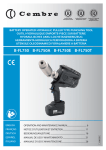


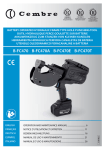
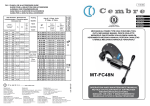
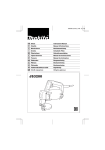
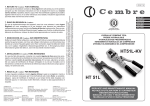
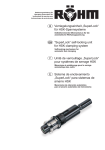
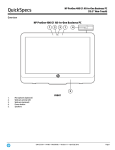

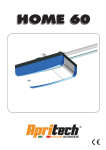
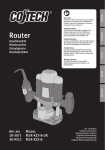
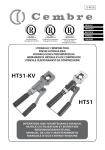
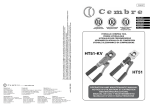
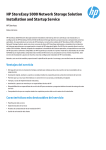
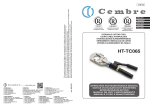
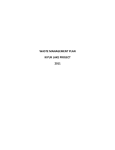
![complete information [English]](http://vs1.manualzilla.com/store/data/005803910_1-e6b0f51b61ee7060f2602055e87ee74e-150x150.png)
